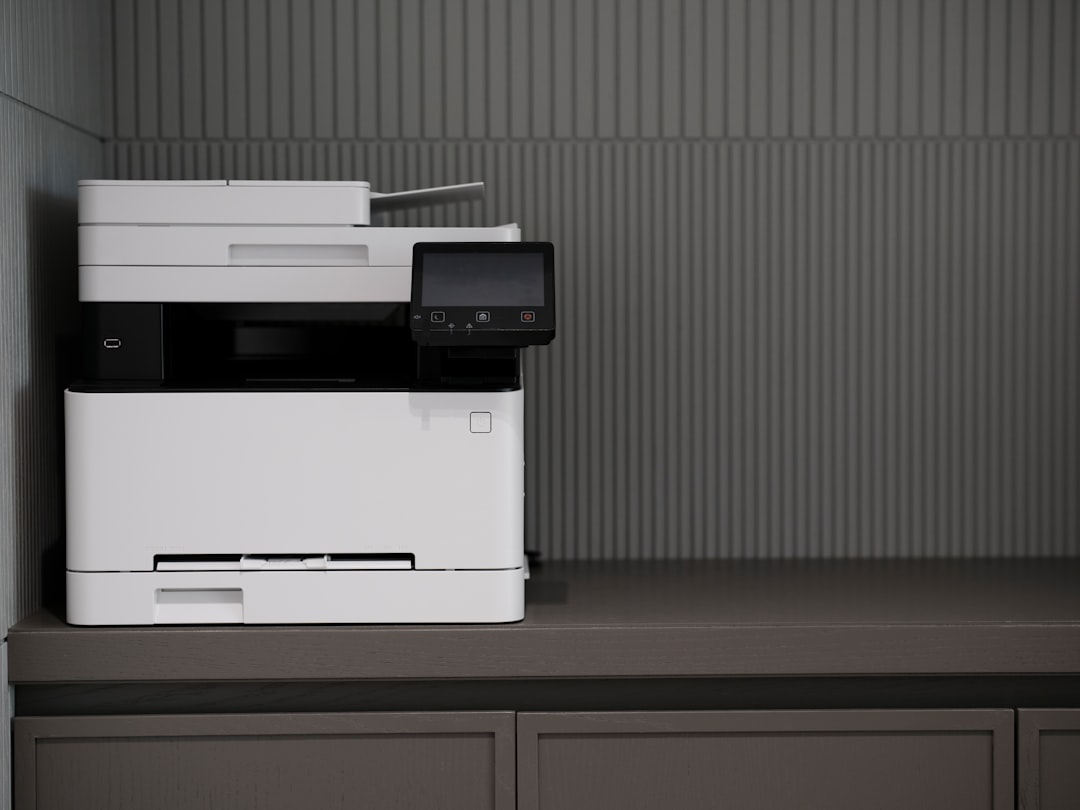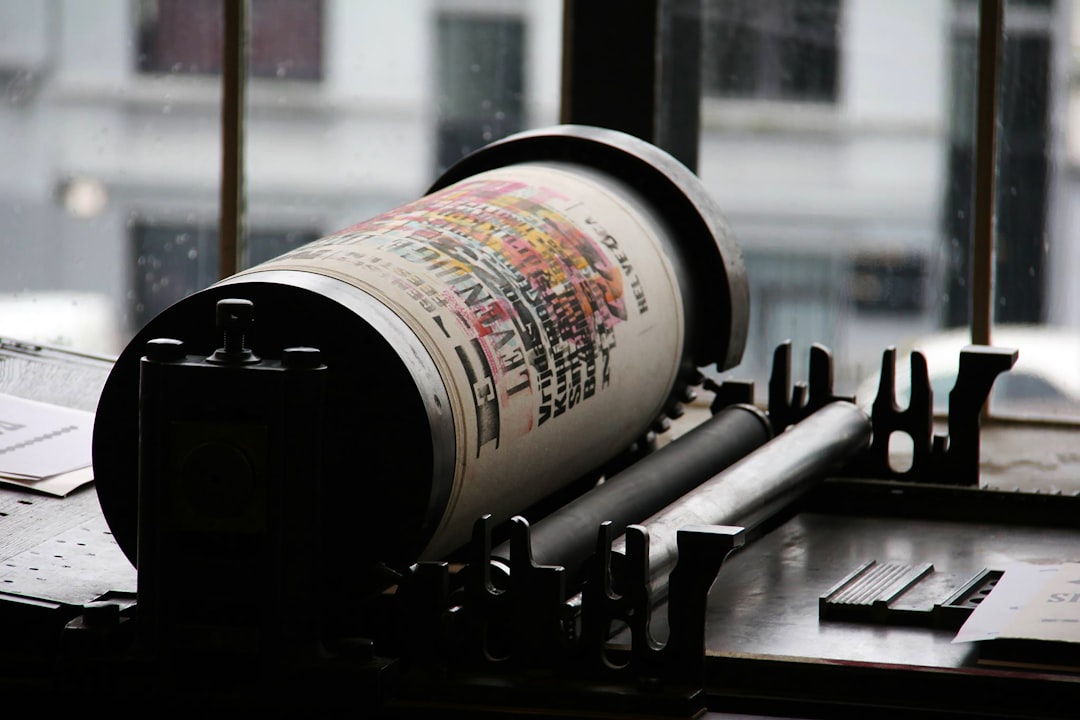

Engage prospects with a scan and streamline customer engagement with FREE QR code marketing tools by Sona – no strings attached!
Create a Free QR CodeFree consultation

No commitment

Engage prospects with a scan and streamline customer engagement with FREE QR code marketing tools by Sona – no strings attached!
Create a Free QR CodeFree consultation

No commitment
Letterpress printing services have experienced a resurgence in recent years, driven by a growing appreciation for tactile design, artisanal finishes, and the personal touch these techniques bring to everything from business cards to wedding invitations. Despite an increasingly digital world, the allure of custom letterpress printing lies in its ability to transform ordinary print materials into memorable, high-impact brand assets.
While letterpress delivers on craftsmanship and premium perception, many print service providers find themselves struggling to bridge the divide between offline customer attention and actionable digital engagement, a gap that can lead to missed opportunities for tracking, nurturing, and converting interest. The people who admire your pieces do not always take the next step; without a simple onramp to digital experiences, valuable intent remains unmeasured.
Integrating QR code technology into letterpress printed materials enables businesses to seamlessly connect their physical assets with robust digital experiences. By harnessing QR code integration, letterpress printing companies can secure greater visibility into lead behavior, streamline engagement workflows, and unlock attribution clarity that translates into smarter growth. With the right platform such as Sona QR, your studio can maintain craft integrity while capturing the analytics and automation that drive conversions.

Letterpress professionals often face hidden losses when prospects interact with tactile assets but do not immediately convert, such as attending a tradeshow, receiving a gift card, or picking up a sample kit. Historically, these moments are difficult to attribute or follow up on, resulting in valuable prospects slipping through the cracks. QR codes modernize this experience by transforming static print into interactive touchpoints and capturing new forms of intent data that inform your sales and marketing strategy.
When implemented thoughtfully, QR codes replace outdated analog workflows with elegant digital paths. Paper RSVP cards become live guest lists with automated reminders. Brochures become gateways to lookbooks, pricing calculators, and appointment booking. Sign-up sheets turn into pre-filled forms that route clean data into your CRM without double entry. The result is faster action, better attribution, and far less manual labor for your team.
With these practices, letterpress shops can retain the artistry of their work while gaining a digital system that supports growth and measurable outcomes.

One of the persistent frustrations for letterpress businesses is the lack of visibility into who interacts with their beautiful printed assets. People keep your cards, pin invitations to fridges, and pass along sample packs, yet the engagement stays invisible. This makes it hard to prioritize follow-up, justify marketing spend, or improve campaign performance.
QR codes solve this visibility gap. Modern buyers move freely between physical and digital environments and expect a simple way to keep moving when interest strikes. A scannable code removes friction and invites immediate action, whether that means browsing a portfolio, reserving a consultation, or claiming a personalized offer. For the studio, every scan is a measurable datapoint that turns anonymous attention into actionable insight.
For letterpress, the synergy is powerful. Your pieces spark desire. QR codes allow that desire to turn into action and data that powers your next win.

Letterpress print assets are often used for VIP outreach, event invitations, or showcasing artisanal portfolios. Selecting the right QR code format ensures you offer value to recipients and receive the data and attribution you need. Not all formats are created equal for every moment, so match the format to the action you want.
Two practical considerations guide your choice. First, think about the immediate action a recipient should be able to take after scanning. Second, ensure your destination respects the premium feel of your brand, with mobile-friendly pages and cohesive visual language. With a platform like Sona QR, you can manage different formats and destinations in one place for consistency and control.
For most letterpress contexts, dynamic web links, vCards, RSVPs, and feedback forms cover the majority of high-value actions while giving you robust analytics and flexibility.

A common challenge for letterpress businesses is that premium assets are collected and admired, yet engagement remains invisible. Strategic QR placements illuminate these interactions and convert admiration into measurable action. The key is to place codes where attention is high and the next step is clear, then pair that placement with a value-driven call to action.
In addition to the classic placements like business cards and invitations, think about the entire customer journey. Use codes on shipping materials to prompt unboxing videos or reviews. Add them to sample kits to direct visitors to the exact paper stock and ink combination shown. Embed them on certificates of authenticity to verify limited editions and collect registrations from buyers and gift recipients.
By prioritizing assets that remain in clients’ hands and contexts where curiosity is highest, you create repeated, measurable engagement and a stronger foundation for revenue growth.

Real-world letterpress scenarios often involve prospects who love what they see but never convert. QR codes transform those moments of high intent into trackable opportunities. To design the right use case, start with a clear outcome, such as booking a consultation, requesting a quote, or registering for an event, then work backward to the printed asset and CTA.
When calibrated correctly, QR codes become part of your studio’s signature experience. Your business cards load a curated portfolio by service type. Your invitations manage RSVPs, dietary preferences, and even event updates without additional printing. Your promo pieces link to exclusive behind-the-scenes videos that increase perceived value and deepen brand affinity.
Each use case aligns a premium tactile moment with a digital action, improving conversion rates and giving your team clarity on who is engaging and what content resonates.
Each scan is a meaningful signal. It contains context such as what was scanned, where it happened, and when the person engaged. By deploying multiple QR codes across touchpoints, you can segment audiences automatically and tailor follow-up with accuracy instead of guesswork. For letterpress, that can mean distinguishing between brides and corporate decision-makers, between agencies looking for wholesale trade partners and individual consumers, or between repeat clients and first-time buyers.
Segmentation begins with intentional code creation. Give each asset a unique code tied to a specific funnel stage and audience. Add tags for event, product type, and location. This lets you build lists such as sample kit scanners considering foil stamping, or exhibition attendees who visited your booth on day two and scanned your price sheet.
This approach turns QR codes into a dynamic audience engine, powering relevant communication and higher conversion rates.
Letterpress studios often operate across many channels, from direct mail and printed collateral to Instagram, local pop-ups, and trade shows. QR codes act as the connective tissue that unifies these channels and collects performance data across them. When every physical touchpoint becomes a tracked entry point, you can see how offline impressions fuel online pipelines.
Integration is not simply about adding codes everywhere. It is about consistency, clarity, and utility. Your visual style should carry across print and digital. Your CTAs should set expectations for the value behind each scan. Your team should know how to use scan data to inform the next step, whether that is a tailored follow-up email or a retargeting ad that spotlights the exact service a prospect viewed.
With a centralized platform like Sona QR, you can manage all codes, monitor performance, and sync scan activity to your CRM and ad platforms. This creates a connected funnel where every channel contributes data and conversions.
Building a strong QR program is easier when you follow a repeatable process. Think through the outcome you want, the action the audience should take, and the materials that will carry your code. Then execute with careful attention to design, scannability, and data flow so you can iterate confidently.
Below is a practical checklist tailored to letterpress contexts such as bridal expos, corporate events, sample kits, and premium stationery. Each step balances craft integrity with marketing performance.
Clarify the business objective first. Do you want to increase qualified quote requests, automate RSVPs, or nurture post-sale engagement for referrals and reviews? The clearer the goal, the easier it is to select destinations, design CTAs, and track the right metrics.
Match the use case to the moment. For a bridal expo, the goal could be “collect warm leads and book consultations.” For a B2B showcase, it might be “capture agency contacts and share a wholesale catalog.” Your QR code should lead directly to that action with minimal friction. Examples include a one-click calendar booking page, a personalized lookbook, or an RSVP form that auto-fills known details.
Choose between static and dynamic codes based on your needs. Static codes work for evergreen content such as a timeless portfolio. Dynamic codes make sense for campaigns that require tracking, destination updates, or split testing without reprinting.
Think about data and flexibility. If you want to attribute scans by asset, region, or event, dynamic codes are essential. They also allow you to run promotions with changing deadlines, shift priority services by season, or replace a sold-out product link with a waitlist. Platforms like Sona QR let you manage these updates centrally and attach UTM parameters consistently.
Integrate the QR code into your letterpress layout thoughtfully. Maintain a high-contrast pairing between code and paper, preserve the quiet zone around the code, and position it where it is both visible and harmonious with your design. Letterpress impression depth and textured stocks can soften corners and edges, so err on the side of slightly larger codes for reliability.
Follow technical best practices that suit letterpress production:
Prioritize placements with strong retention and high-intent moments. Business cards, invitations, packaging, and sample kits are retained longer and scanned repeatedly. Event signage, table tents, and conference handouts capture live interest where people are primed to act.
Map the deployment to audience behavior. For example:
Treat your first deployment as a learning loop. Pull data on scan rates by asset, time, and location, then look at conversion behavior from scan to outcome. Identify drop-offs, test alternative CTAs, adjust landing page messaging, and iterate on placement.
Build a cadence for review and optimization. For example:
One of the most common frustrations in letterpress is losing sight of which print efforts actually generate sales. Without robust analytics, you end up relying on instinct. QR-driven analytics close the loop by tying scan activity to downstream outcomes such as form fills, booked consultations, quotes sent, and revenue closed.
To get meaningful insight, capture data at three levels. First, scan-level metrics that tell you what was scanned, when, and where. Second, session-level metrics that show landing page performance and click behavior. Third, CRM-level attribution that connects a scan to a known contact, a lifecycle stage, and pipeline movement. The deeper your visibility, the more confidently you can adjust creative, placements, and budgets.
With Sona QR and Sona.com, you can move beyond isolated scan counts. Sona QR tracks scans by time, device, and context. Sona.com connects anonymous scans to known buyers through identity resolution, syncs with CRM systems like HubSpot and Salesforce, and supports multi-touch attribution that shows how QR engagement contributes to pipeline and closed revenue. This unified view turns QR from a novelty into a reliable performance lever.
Every letterpress shop contends with limited staff time for follow-up, incomplete contact data, and the challenge of making premium print measurable. Modern QR workflows reduce manual work and increase conversion without diluting your craft. The key is to choose a few high-impact practices and apply them consistently.
Pair these tips with creative deployment ideas that fit your brand. If you run workshops, add a QR to tabletop placards that enroll attendees in a loyalty list for supplies or future classes. If you sell limited editions, print a QR on the certificate of authenticity that registers the buyer and delivers a care guide, a behind-the-scenes video, and an upsell to framing.
These small operational changes add up to noticeable gains in scan rate, conversion, and lifetime value without sacrificing the visual and tactile quality that defines letterpress.
QR code integration in letterpress printing services marks a turning point in aligning craft with modern measurement and engagement. By addressing pain points such as untracked high-value prospects, lack of visibility into anonymous interest, and manual follow-up, letterpress shops can convert more attention into action while learning what truly drives demand. The outcome is a refined customer journey that preserves the beauty of print and unlocks the performance of digital.
The path forward is clear. Add scannable, value-rich destinations to the assets you already produce. Use dynamic codes and analytics to learn quickly and optimize. Sync scan data with your CRM to enable timely, personalized follow-up. With Sona QR, you have the tools to manage codes at scale, connect scans to revenue, and build a repeatable growth engine. Marrying the artistry of letterpress with the immediacy of QR code technology ensures your studio remains both memorable and measurable in a market that rewards both. Start creating QR codes for free.
QR codes have transformed letterpress printing services from traditional, static pieces into interactive, measurable marketing assets. Whether it’s enhancing customer acquisition, enriching client engagement, or tracking campaign effectiveness, QR codes bring a new level of dynamism to beautifully crafted prints—turning every card, invitation, or brochure into a powerful conversion tool. Imagine knowing exactly which letterpress materials spark customer action and tailoring your marketing on the fly to maximize impact.
With Sona QR, you can effortlessly create dynamic, trackable QR codes that update instantly without the need to reprint. Connect every scan to real-time data and revenue insights, transforming your letterpress projects into smart, high-performing campaigns that drive repeat business and deepen customer relationships. Start for free with Sona QR today and elevate your letterpress printing services from artful impressions to measurable results.
Letterpress printing offers tactile design, artisanal finishes, and a personal touch that transforms ordinary print materials into memorable, high-impact brand assets with a premium perception.
You can integrate QR codes by selecting the right code type, designing for scannability on textured paper, placing codes on high-retention assets like business cards and invitations, and linking codes to dynamic, mobile-friendly digital destinations.
The process includes choosing a clear use case, selecting static or dynamic QR code types, designing the code with high contrast and proper quiet zones for letterpress, testing scans on multiple devices, deploying codes on key materials, and tracking performance to optimize results.
High-quality letterpress printing services that support QR code integration often use platforms like Sona QR to maintain craft integrity while enabling analytics, automation, and dynamic code management.
Choose a service that balances artisanal craftsmanship with modern QR code technology, offers dynamic code capabilities, provides analytics integration with CRMs, supports flexible design for tactile materials, and helps you track and optimize engagement.
QR codes bridge the gap between beautiful physical print and measurable digital engagement, allowing businesses to track who interacts with their materials, attribute actions to specific assets, and convert interest into actionable insights.
Common formats include web links to landing pages, vCards for contact sharing, event RSVPs with automated reminders, feedback forms, coupon redemptions, SMS or email pre-fills, and app downloads or portfolio viewers.
By creating unique QR codes for each funnel stage, tagging scans by action and location, and syncing this data with CRMs and ad platforms, businesses can segment audiences for tailored follow-up and targeted marketing.
Design best practices include using at least 0.8 inches square for small items, high-contrast dark inks on light stocks, maintaining a clear quiet zone around the code, avoiding textured or heavily embossed areas, and thorough testing across devices and lighting.
Use platforms like Sona QR to monitor scan metrics such as time, location, and device, attribute scans to outcomes like bookings or sales, enrich CRM records with scan data, and apply scoring to prioritize high-intent leads for timely outreach.
Effective placements include business cards, event invitations and RSVP cards, product packaging, gift certificates, workshop signage, conference collateral, sample kits, and certificates of authenticity.
Dynamic QR codes allow updating destinations, offers, and messaging in real time without reprinting, enabling greater flexibility, relevance, and longer campaign lifespans.
Optimize by reviewing scan data regularly, testing alternative calls to action and landing pages, adjusting code placement, retiring underperforming codes, scaling successful ones, and aligning follow-up with observed engagement patterns.
Tips include assigning unique codes per asset, adding UTM parameters for tracking, designing clear and benefit-driven CTAs, training staff to encourage scanning, and automating personalized follow-up communications.
QR codes unify offline and online channels by turning physical touchpoints into tracked digital entry points, enabling performance data collection across direct mail, social media, events, signage, and more.
Use Sona QR's trackable codes to improve customer acquisition and engagement today.
Create Your FREE Trackable QR Code in SecondsJoin results-focused teams combining Sona Platform automation with advanced Google Ads strategies to scale lead generation

Connect your existing CRM

Free Account Enrichment

No setup fees
No commitment required

Free consultation

Get a custom Google Ads roadmap for your business






Launch campaigns that generate qualified leads in 30 days or less.
